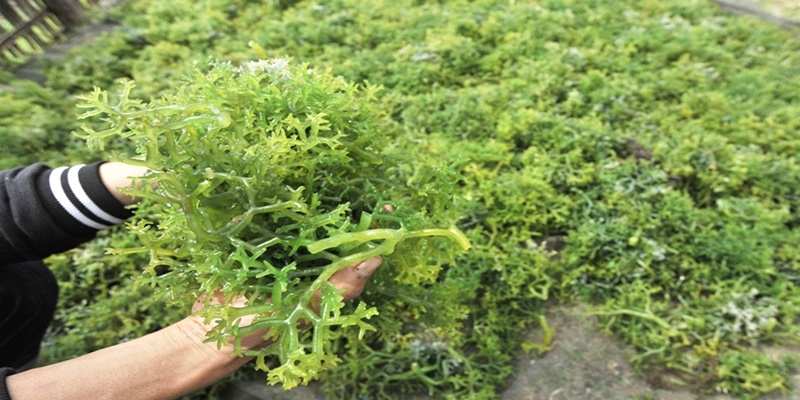Gracilaria sp. and Eucheuma cottonii (Kappaphycus alvarezi) are two species of red seaweed (Rhodopicheae) which until now has the highest value among the 500 seaweed species growing in Indonesia. Both of these species are widely used in food, non-food and pharmaceutical industries. Gracilaria sp has been successfully cultivated and has become the largest source of water soluble fiber, agarose and agaropectin known to public as jelly. Eucheuma cottonii is the largest source of carrageenan. Agar and carrageenan are carbohydrate compounds that can bind water and form gelling agent, so these two compounds are called hydrocolloids.
As the production of agar and carrageenan increases, so will the volume of waste produced. Agar and carrageenan are produced in several ways both under acidic and alkaline conditions. In the production, seaweed will be pressed to get the extract. So the manufacturers produce solid waste in the form of pulp. With the concept of green economy (zero waste), the industry must be able to process waste into valuable products to reduce water or soil pollution. Therefore, in the study of Halida et al (2019) “The potential of seaweed waste (Gracilaria sp. Eucheuma cottonii) as a medium density fiberboard (MDF) -based pot material for better water use efficiency in tomato plants “showed that the solid waste from the two seaweeds above can be used as MDF-based pots with a compact structure for chili plants. Pot made from seaweed waste above is estimated to be able to substitute the use of plastic bags which has been a serious sustainable environmental issue.
Judging from its function, the pot made of seaweed waste has many advantages compared to polybags. Among other things, the presence of hydrocolloid remnants in the waste makes this pot stores more water reserves for plant growth. So the water cannot evaporate quickly because the water is bound by the pot used. Therefore, by using this pot, the use of water in growing chili can be suppressed. Thus, in general, pots made from seaweed waste are very beneficial for agricultural application with an environmentally friendly concept.
Author: Mochammad Amin Alamsjah
Details of research available at:
https://iopscience.iop.org/article/10.1088/1755-1315/236/1/012110
H. Kurnia, R R Rifadi, Agustono, M N G Amin, S A Sudjarwo dan M A Alamsjah. 2019. The potential of seaweed waste (gracilaria sp. and eucheuma cottonii) as a medium density fiberboard (mdf)-based pot material for better water use efficiency in tomato plants. IOP Conference Series: Earth and Environmental Science, Volume 236, conference 1.





